Pumpkin Pulp (10645)
Sunday, November 07, 2021
5:30 PM 11/07/2021
Faced with about 100 pounds of ex-Halloween pumpkins - what to do?
I have purchased 48 one-litre preserving bottles and will, as last year, bottle-preserve the pulp.
Fifteen pumpkins ranging from 2 to 15+ pounds, and most of them large pumpkins; I am looking at 90+ pounds of pumpkin, and I still have to collect Caitlin's pumpkins.
This year I plan to:-
(1) Dry the skin and use it to boil-up ("reconstitute") as required. Or to splurge on several gallons of dip and NOT invite George Costanza.
(2) Rinse and dry the seeds then roast and grind them for coffee-substitute
(3) Render down the flesh in my lidded canning tub, but this year strain the pulp overnight. The liquor I will either use as vegetable broth or turn into a horribly-healthy drink, with a bit of ground black pepper added; or similar.
(4) Bottle the drained/strained flesh into one-litre jars.
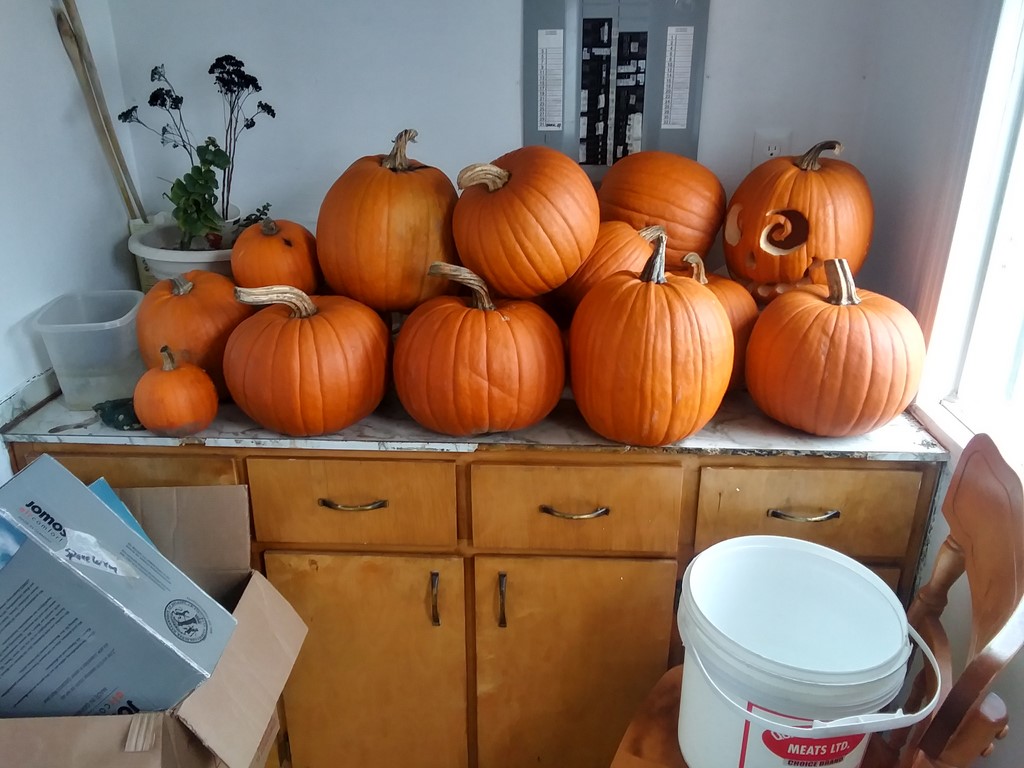
This is my collection (minus one from Amanda) of pumpkins less three that were already in-process. Thanks Kerry, Debbie, Bonnie, Kelly, Amanda.
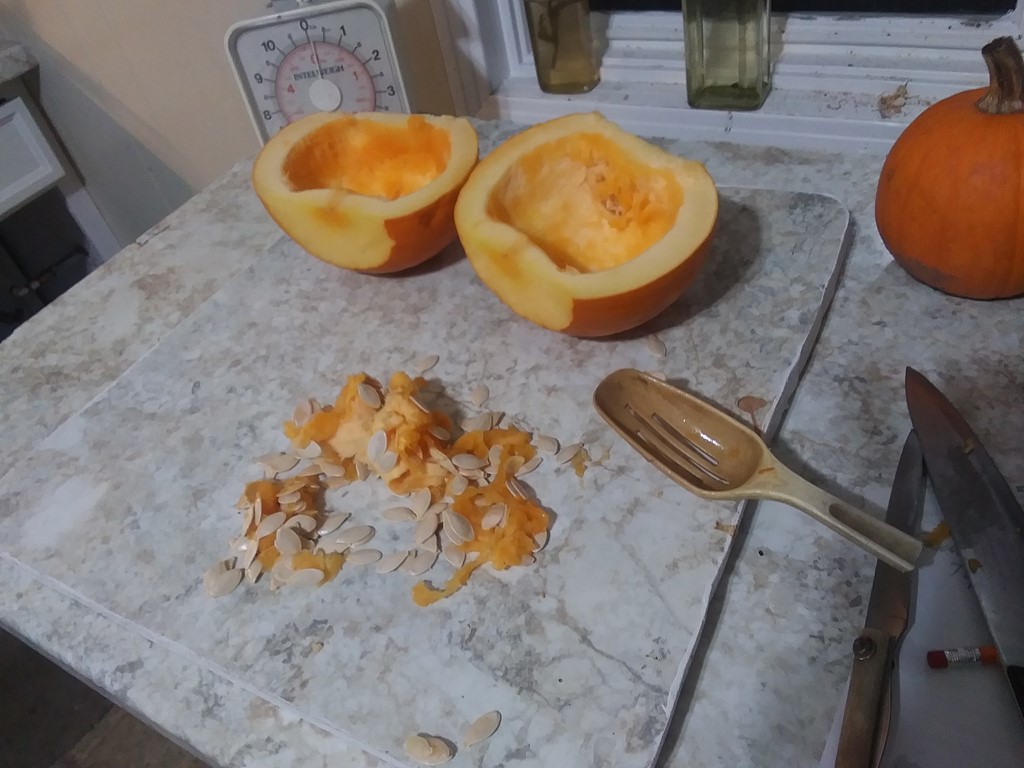
A pumpkin is sliced in half after being top-and-tailed. I use a broken handled plastic spoon to scrape out seeds which go into a bucket to be rinsed and dried before being roasted for coffee.
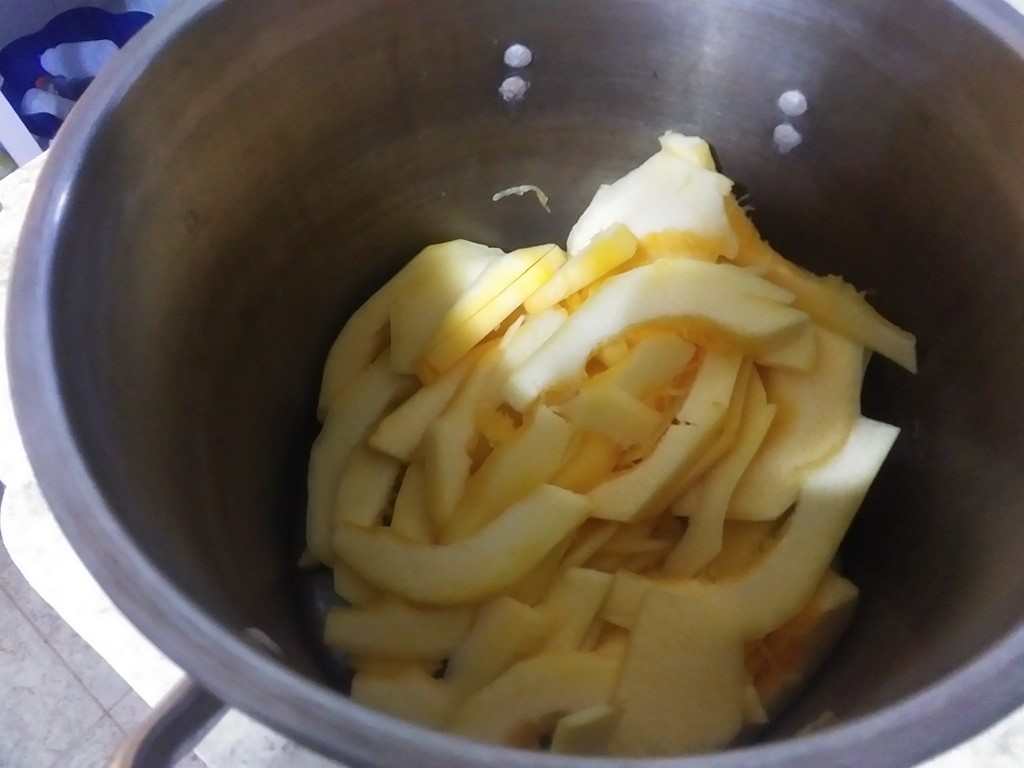
The diced flesh, looking a lot like rock-melon, goes into my boiler pan with a ½ cup of strained liquor from the previous day. The liquor provides a source for steam to render down the new batch.
I will harvest a half-litre of liquor per pumpkin.
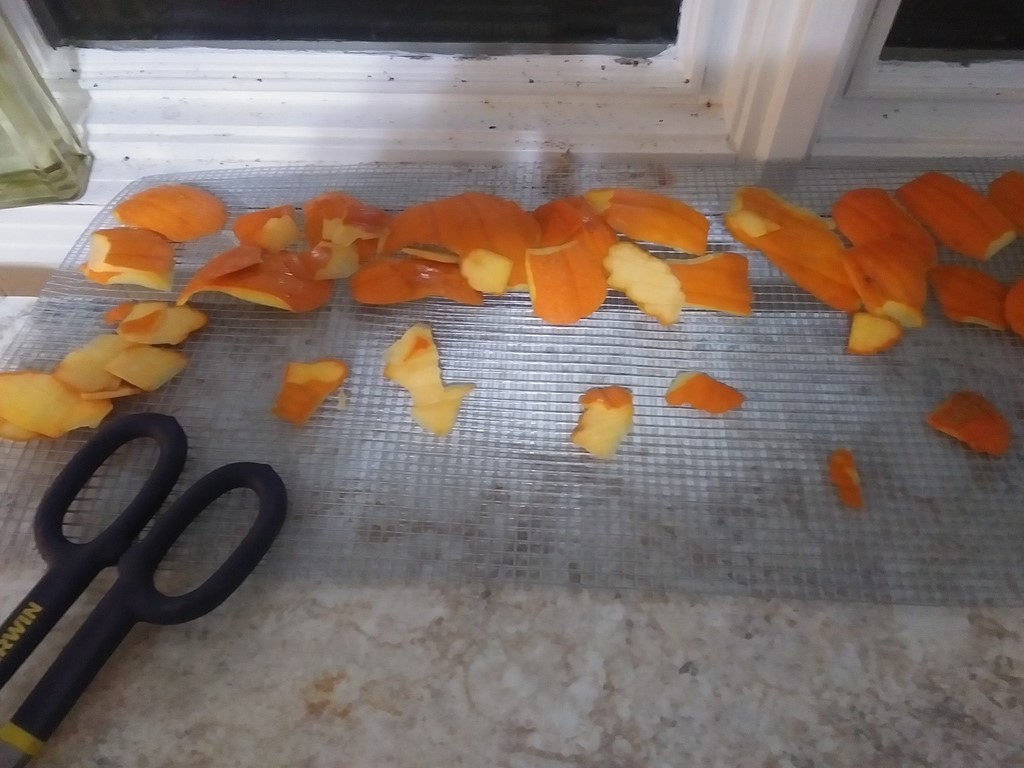
The peel, sliced as thinly as possible, is spread on quarter-inch mesh and suspended above the 2,500 watt baseboard heater.
Monday, November 08, 2021
Christopher Greaves Pumpkins_20211107.xls
Description |
Lbs |
oz |
ozs |
||||
|---|---|---|---|---|---|---|---|
Medium whole pumpkin |
3 |
0 |
48 |
48 |
|||
top and tail leaves |
3 |
48 |
|||||
skin off leaves |
2 |
2 |
34 |
net |
|||
Small whole pumpkin |
1 |
15 |
31 |
31 |
79 |
oz total |
whole pumpkin |
top and tail leaves |
1 |
14 |
30 |
||||
skin off leaves |
1 |
9 |
25 |
||||
seeds out |
1 |
6 |
22 |
net |
|||
56 |
oz total |
||||||
[next morning] |
|||||||
strained pulp & colander |
2 |
14 |
46 |
||||
Colander |
8 |
8 |
|||||
Strained Pulp |
2 |
6 |
38 |
38 |
oz total |
pulp |
Two whole small pumpkins (79 ounces) yielded 38 ounces of strained pulp. I shall call this yield ration fifty-percent.
I have two jars bottled/boiling, and this afternoon should start a production line boiling a large batch of raw pulp to fit into three one-litre jars for bottling each morning.
What I have learned today:-
(1) The whole pumpkin must be cut into small enough pieces to control in the palm of my hand so that the sharp knife can be used to peel away from my body.
(2) Thin slices of peel mean faster drying and more net pulp.
(3) Drying takes time; I will freeze bags of peel and dry them out during our five? Months of winter when my 2500W heater is operating; a good excuse to rise to a moist kitchen
(4) As well it makes little sense to dry peel when the bottling urn is spewing steam into my kitchen
(5) A large whole pumpkin fills my lidless pan, which is probably not enough for three one-litre jars; I may have to store diced flesh in the fridge.
(6) Reckon on an hour for peeling, dicing, and another 30 minutes for the bottling process, so if I can do one pumpkin per day I’ll be doing good.

The skins have begun to curl, but they are not dry, still flexible. I am going for “brittle” on the grounds that I can always reconstitute them with water as a vegetable if I choose to do so.
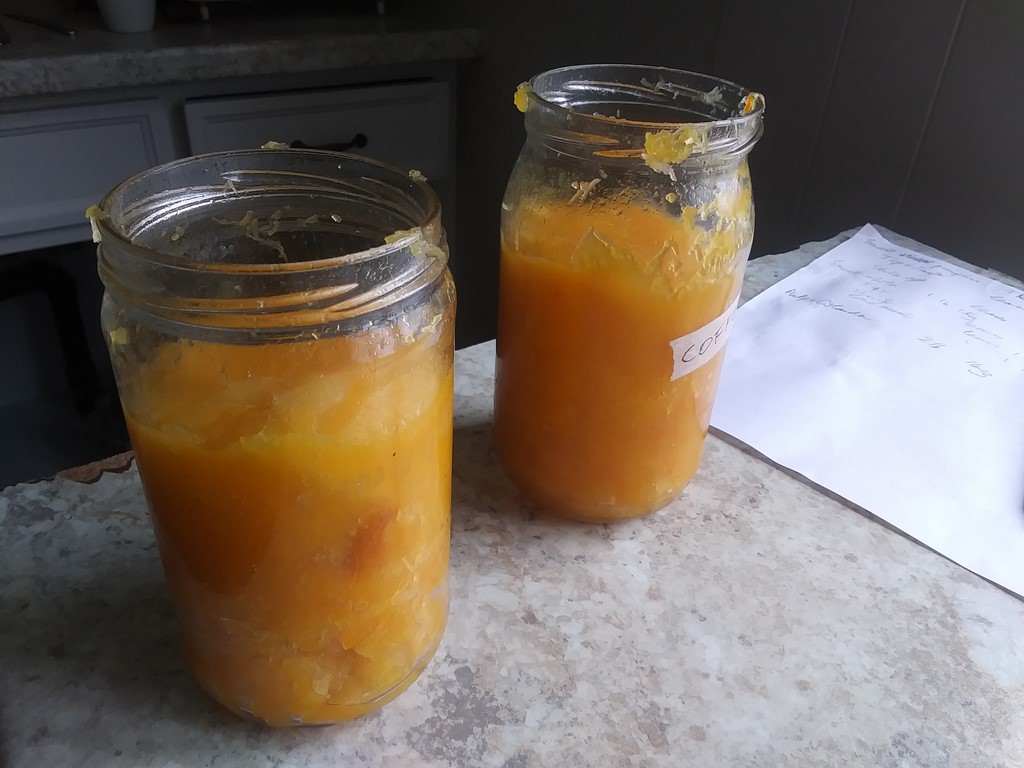
Two jars being filled with boiled pulp.
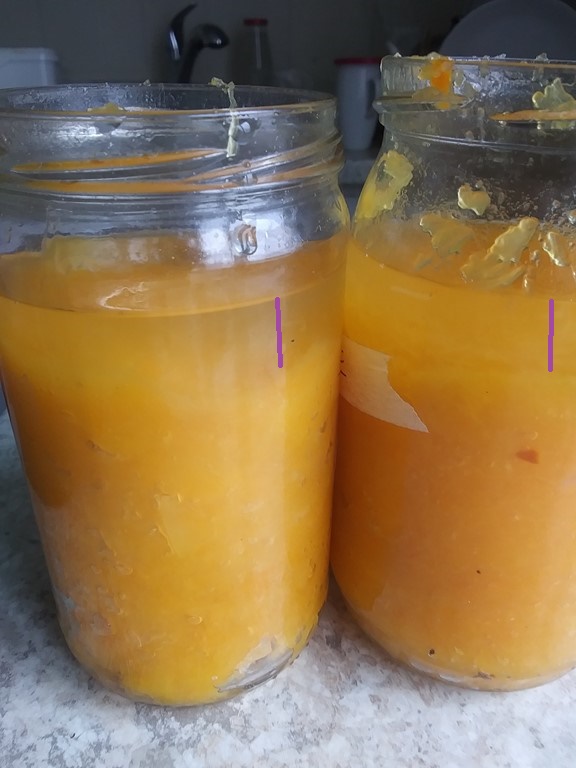
These first two gherkin jars received a cup of liquor each; too much. I need just enough to make the vapor seal.
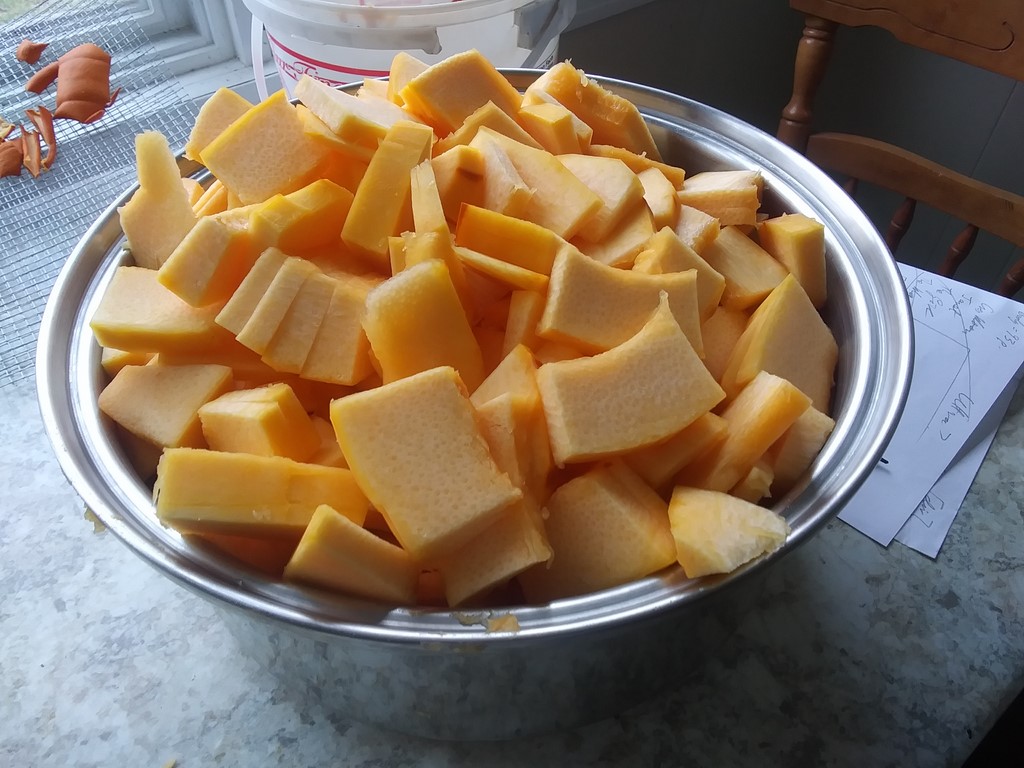
Damn! But these make me want cantaloupe! This is a batch of diced pumpkin waiting to be rendered down to soft pulp.
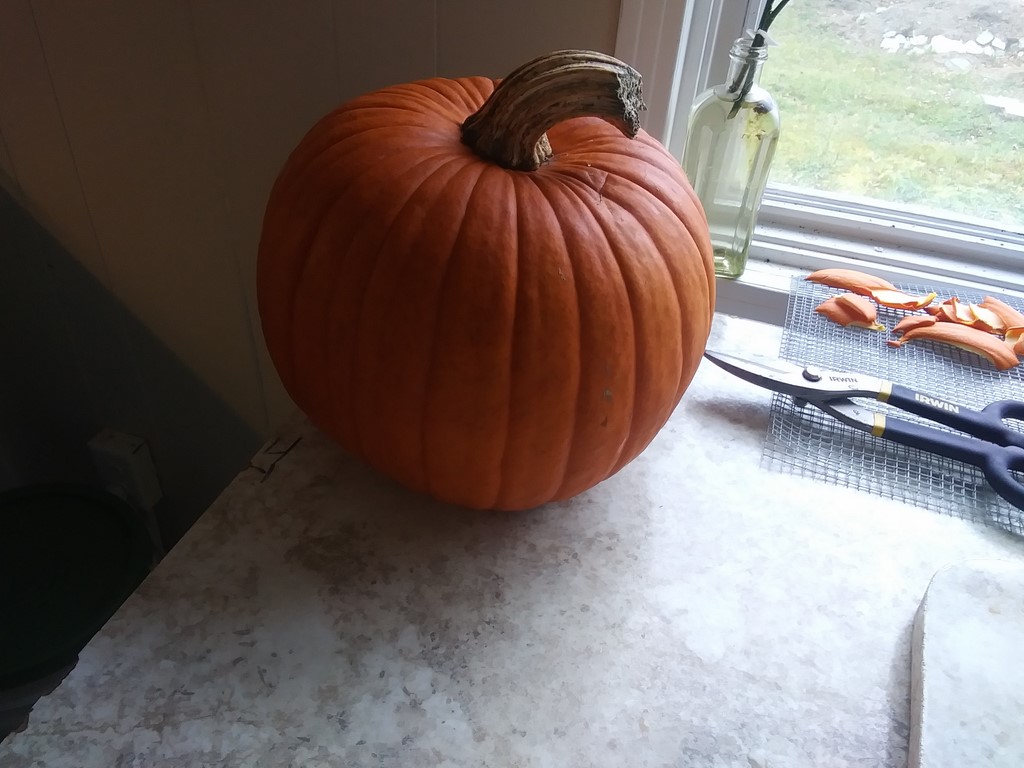
A medium to large pumpkin. This was a ten-pounder.
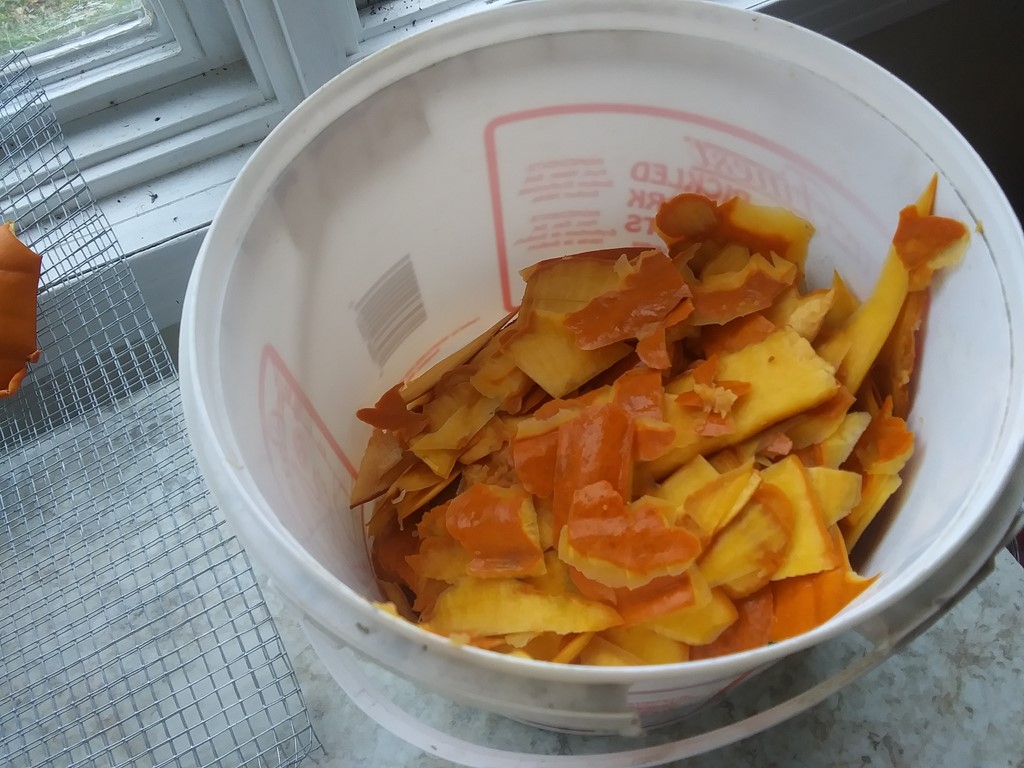
The tub of peel. Because I am not properly set up for drying along my eight-and-a-half foot baseboard heater.
Tuesday, November 09, 2021
11/09/2021 |
Medium large pumpkin |
9 |
8 |
152 |
net |
|---|---|---|---|---|---|
Diced pulp |
4 |
7 |
71 |
||
4 |
3 |
67 |
|||
-7 |
-7 |
||||
-7 |
-7 |
||||
125 |
net |
||||
skin & seeds |
27 |
(7) I begin to get into a procedure:-
(a) The night before, bring in a pumpkin to come to room temperature and rinse the mud from it, let it be wet overnight; the mud brushed off first thing.
(b) Label yesterday’s cooled jars and place in store.
(c) Peel and dice into the boiler tub.
(d) Remove from heat and strain through the colander.
(e) Tamp into jars and lid and sterilize.
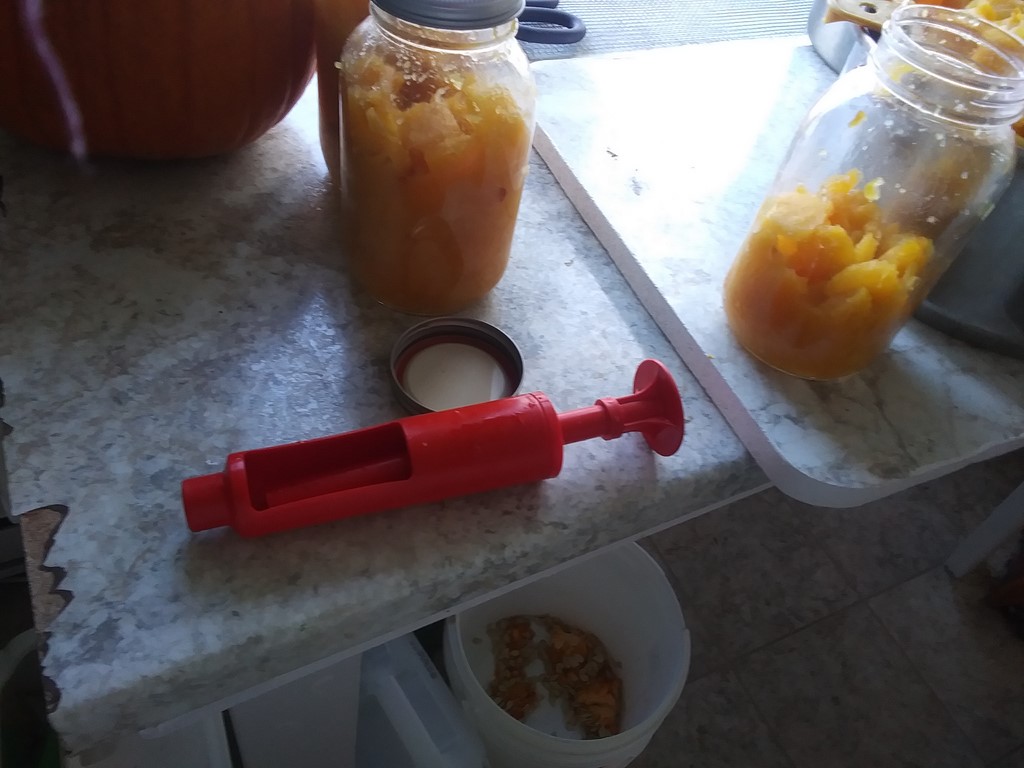
I bought a cheap plastic corker for my ginger beer this year.
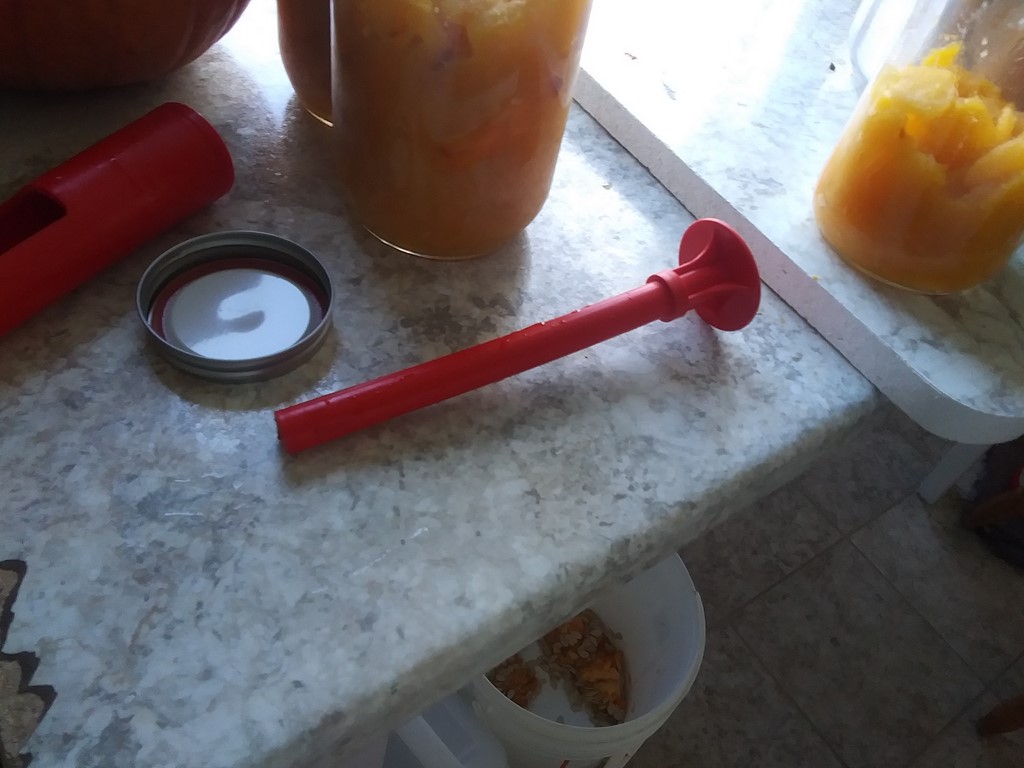
It comes apart something wonderful. The plunger is just great for tamping down pumpkin flesh in a bottling jar. (Second Use For Everything)
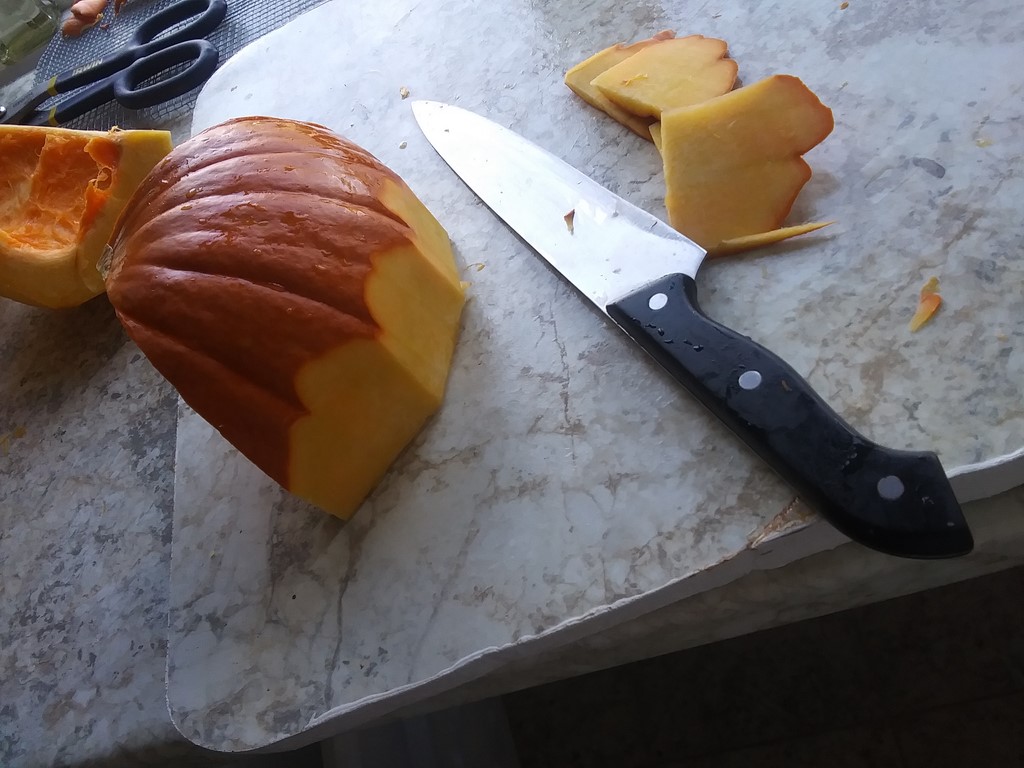
Technique: I have found it best for me to slice downward onto a large chopping board.
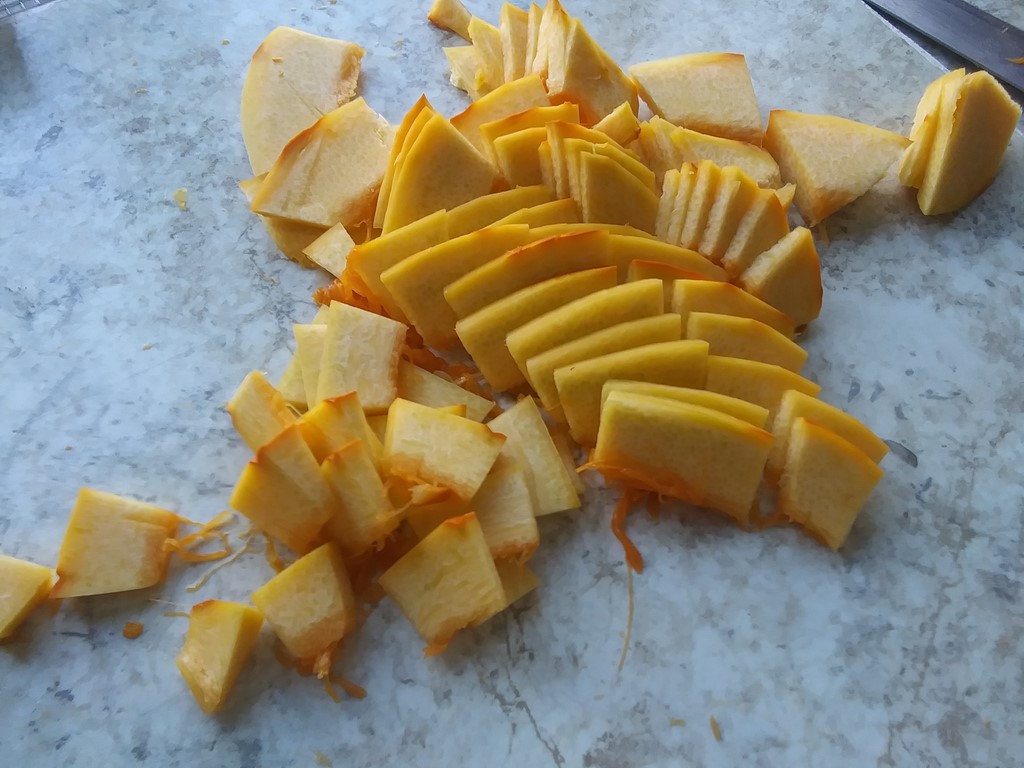
Diced about 3 millimeters thick and no more than 5 cm long makes for fast rendering.
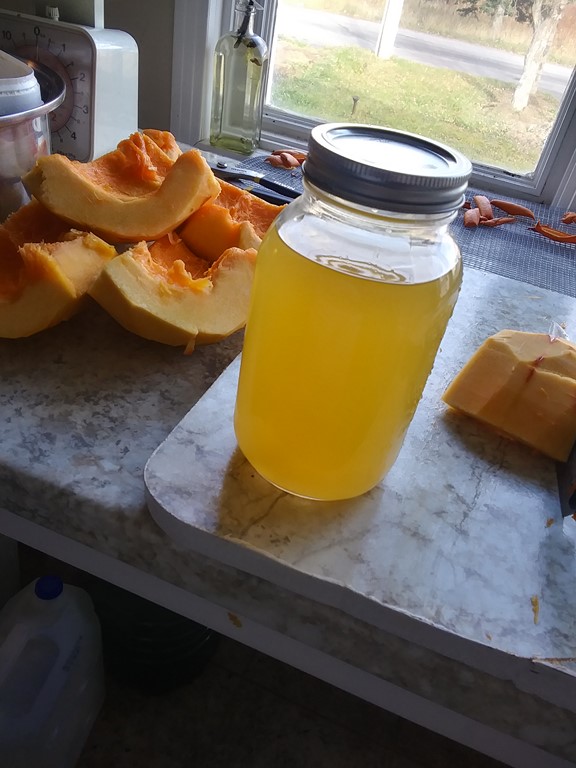
Here is another litre of liquor; into the fridge and I will sterilize the lot once all the flesh is done. On the left, a pile of peeled segments awaits dicing.
This morning I spent from 0930 to 1015 dealing with a 9.5 pound pumpkin. Less than an hour; add 15 minutes for labeling etc and three jars cost me an hour, That seems expensive until you factor in the time I will save in reduced trips to the store for vegetables for a year.
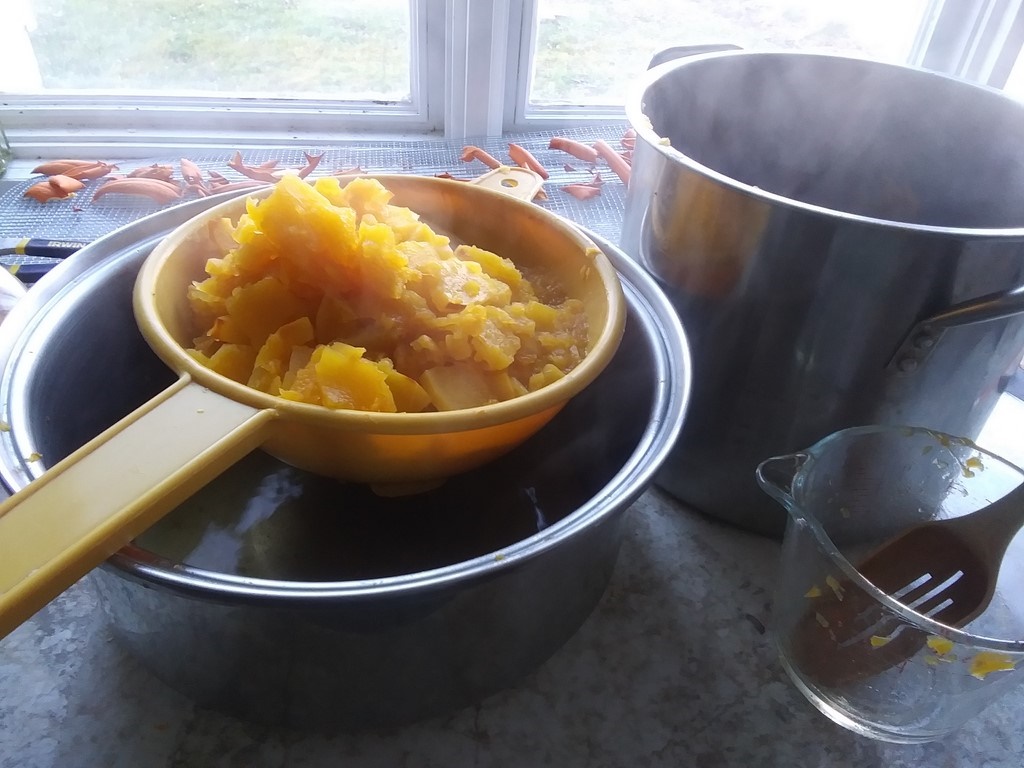
I am straining the boiled pulp before tamping the strained pulp into jars. The liquor is stored on one-litre jars in the refrigerator. I will sterilize it once I have sterilized all my pulp, and the liquor is vegetable broth, good for boiling pasta!
Wednesday, November 10, 2021
9:30 to 10:10, say forty minutes this morning.
10-Nov |
Whole large pumpkin |
12 |
7 |
199 |
|
|---|---|---|---|---|---|
9:30 top, tail, halve, seeds |
|||||
9:37 peel |
|||||
Urn no lid |
2 |
2 |
34 |
||
9:50 dicing |
|||||
10:06 diced |
11 |
3 |
179 |
||
1 |
8 |
24 |
|||
203 |
|||||
-34 |
|||||
169 |
net |
I loaded the urn with ½ cup liquor and dropped in the first segment (diced) to being heating up, then added segments as they were diced. I have one segment remaining in the colander and should be able to add that in about an hour. Now back to work!
“You haven’t done all them pumpkins yet?” asks my neighbour; No, only one per day. It takes but forty minutes to prepare a pumpkin, so I could do several, or all of them, and pop the diced flesh in the refrigerator but I am limited by the speed of bringing to the boil, simmering, and bottling in the urn, so one-a-day it is.
Monday, November 15, 2021
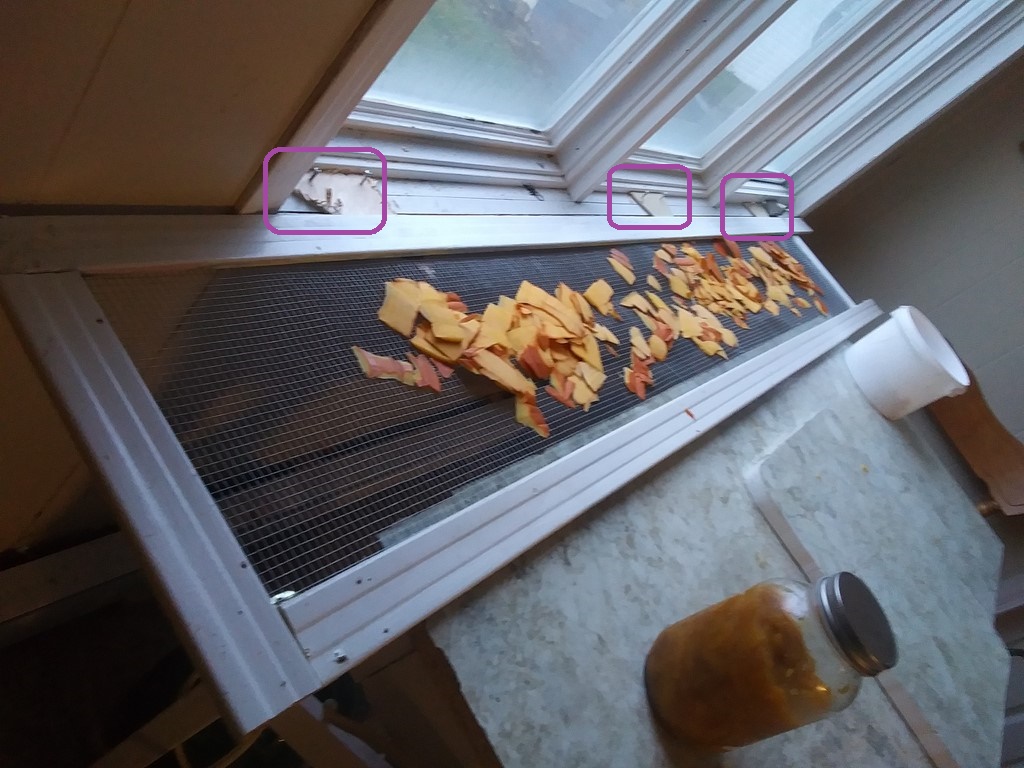
I have made a crude drying rack, resting on the window ledge and my kitchen bench.
The baseboard heater is over eight feet long and is rated 2,500W, so I have plenty of space. You see the skin fragments from a 15-20 pound pumpkin.
The three triangular scraps of plywood that are tacked into place, are circled.
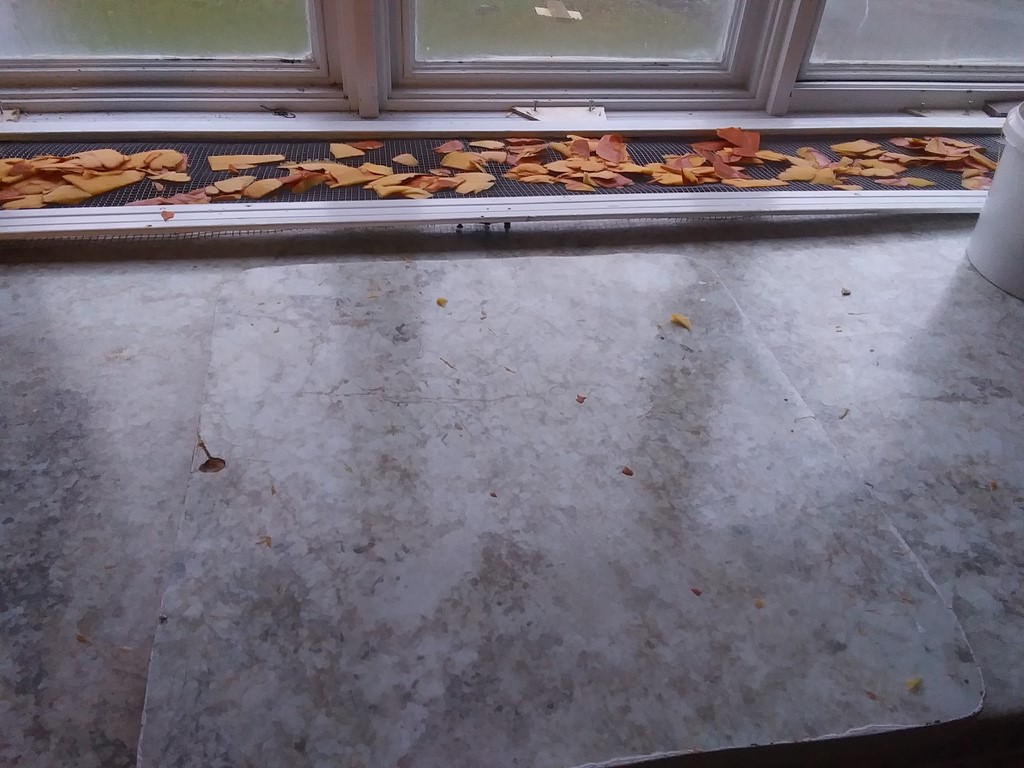
A straight-on view of the drying rack doing its job.
Tuesday, November 16, 2021
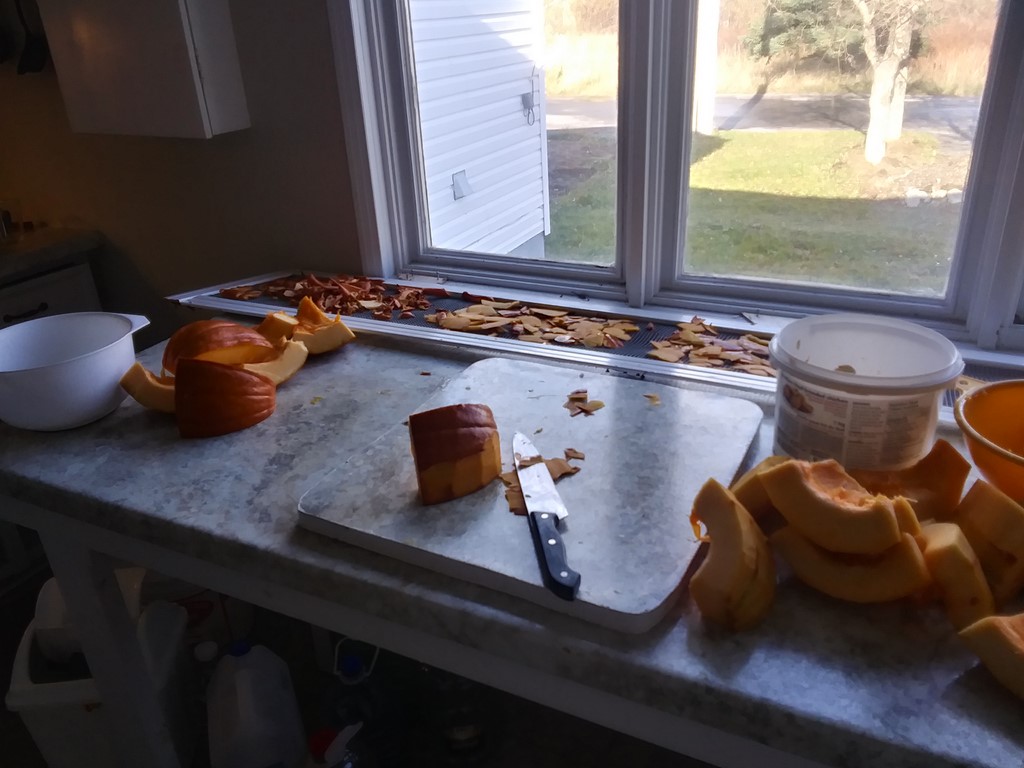
Here is my morning production line. I am peeling one of the sixteen (thirty-two?) chunks of a single pumpkin. The seeds were removed and sit in the salt-beef pail waiting to be tossed into my ¼ inch sieve outside to be washed by heavy rain and dried in the sun and wind.
Segments waiting to be peeled are at the left, segments peeled and waiting to be diced sit at the right.

Close-up of segments de-seeded, waiting to be diced. This is a slippery business and I keep a pot of water in the sink to speed up washing of hands.
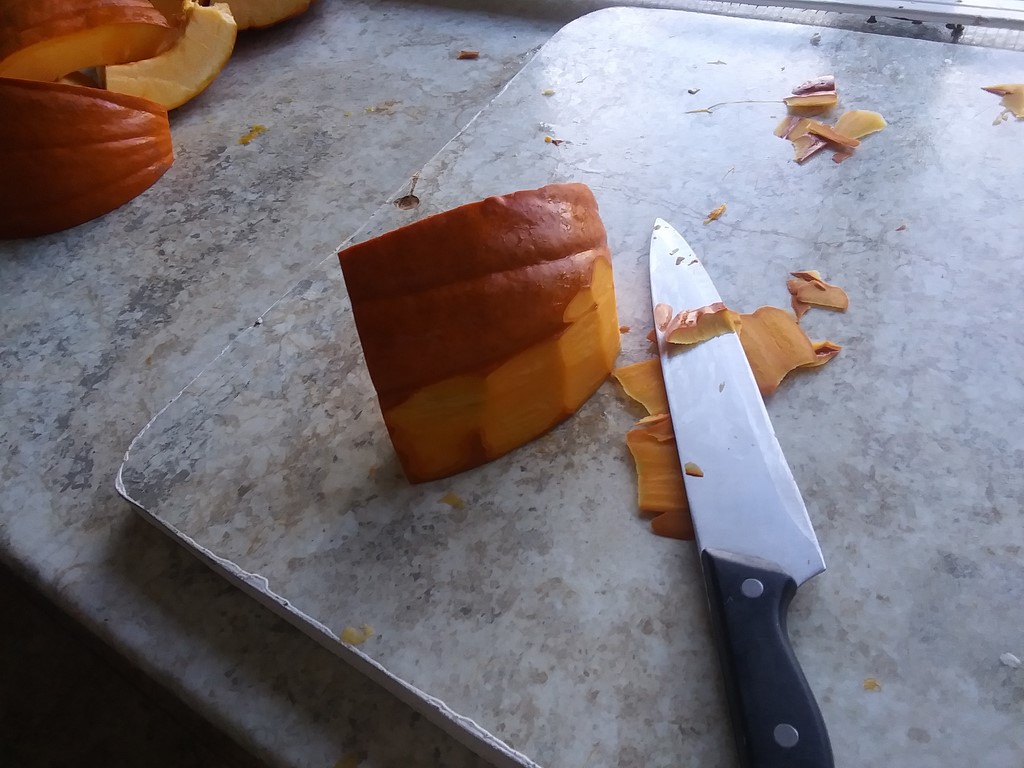
My latest method of peeling. I lie the segment on one of its two flat edges (I am right-handed), and so the segment is well-supported by the chopping board, and I can exert full but guided pressure downwards on the knife.
“Sharp tools are safe tools” Mister Hewison taught us.
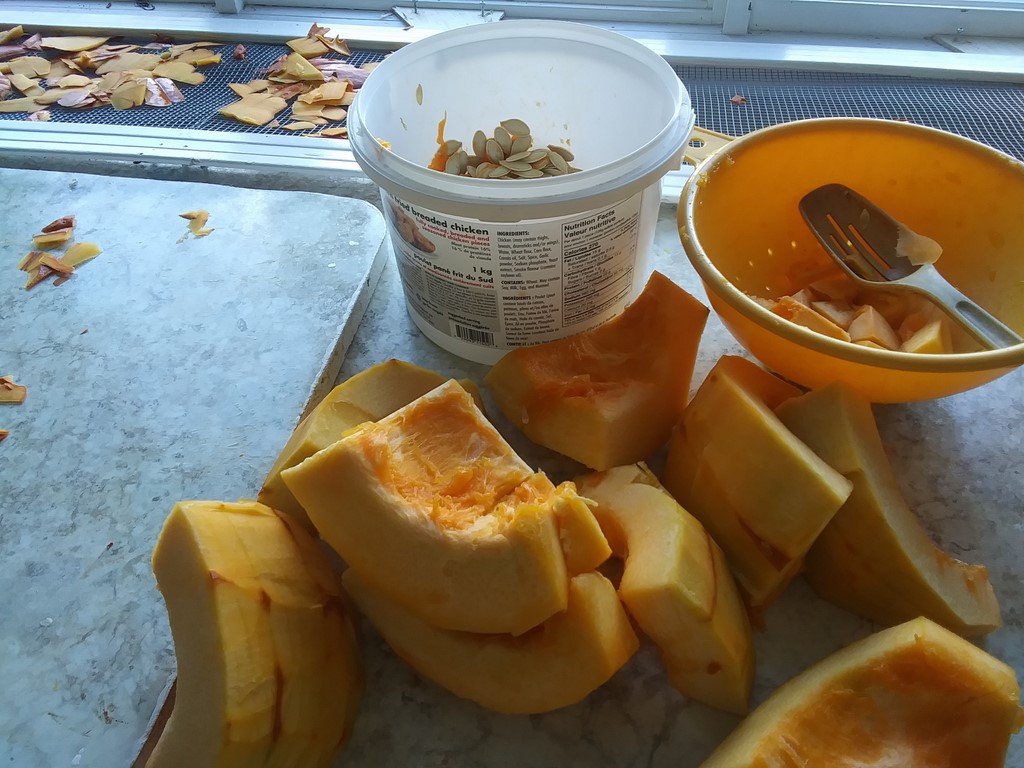
Segments waiting to be diced. The seeds are waiting to go outside to dry au naturel. In the colander are the edible trimmings of the top-and-tail process.

Yesterday’s peel has been shunted to the left; it is sufficiently dry to be pushed along with the fingers of one hand, and the peel having curled, air-flow is improved. Today’s peels are spread across 2/3 of the rack.
Too late this morning I found that the overlap was of the left-hand piece of mesh, and peel began to slide beneath it as I pushed right-to-left. Once the pulp is in the pan, I shall carefully rotate my drying rack.
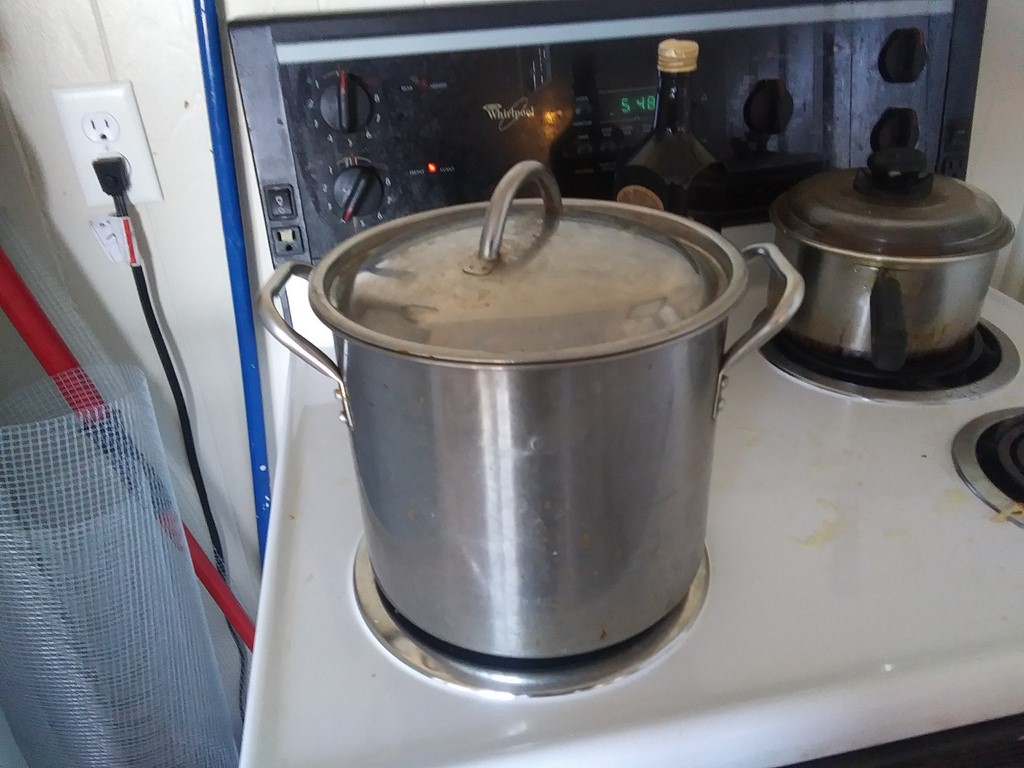
Three jars of pulp are coming to the boil in the urn. For myself I am using one-litre jars, but one day I will do a batch of ½ litre jars to give to donors as a token of my thanks. Only a token.
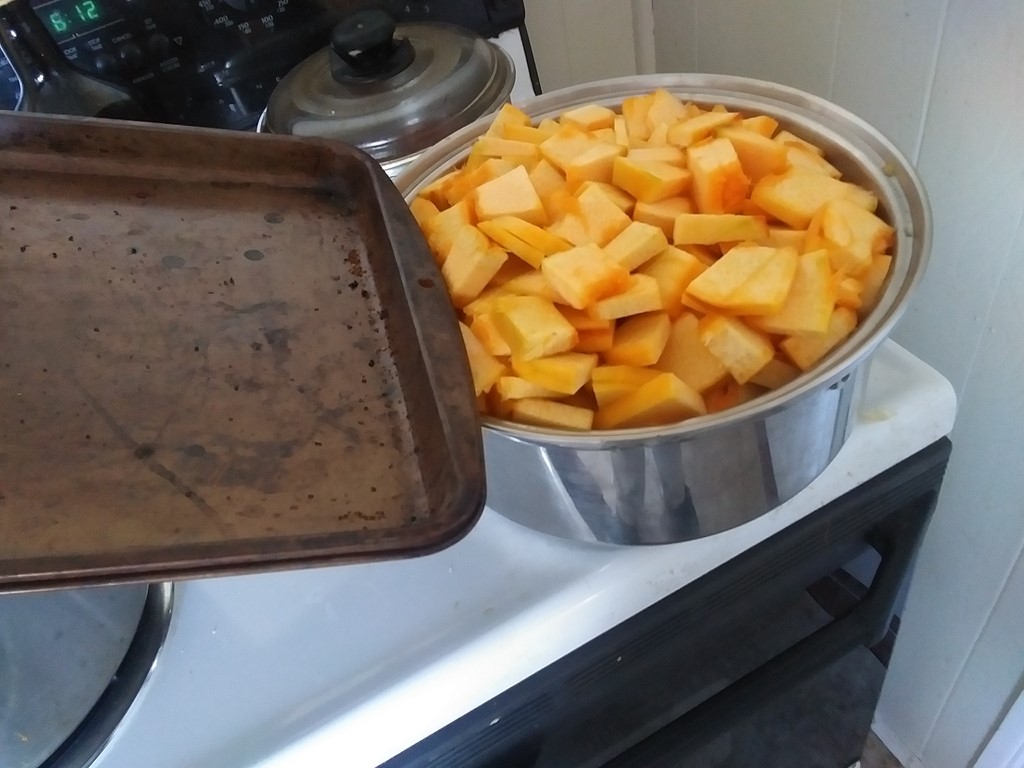
Most of the segments fit into my broad pot-with-no-lid.
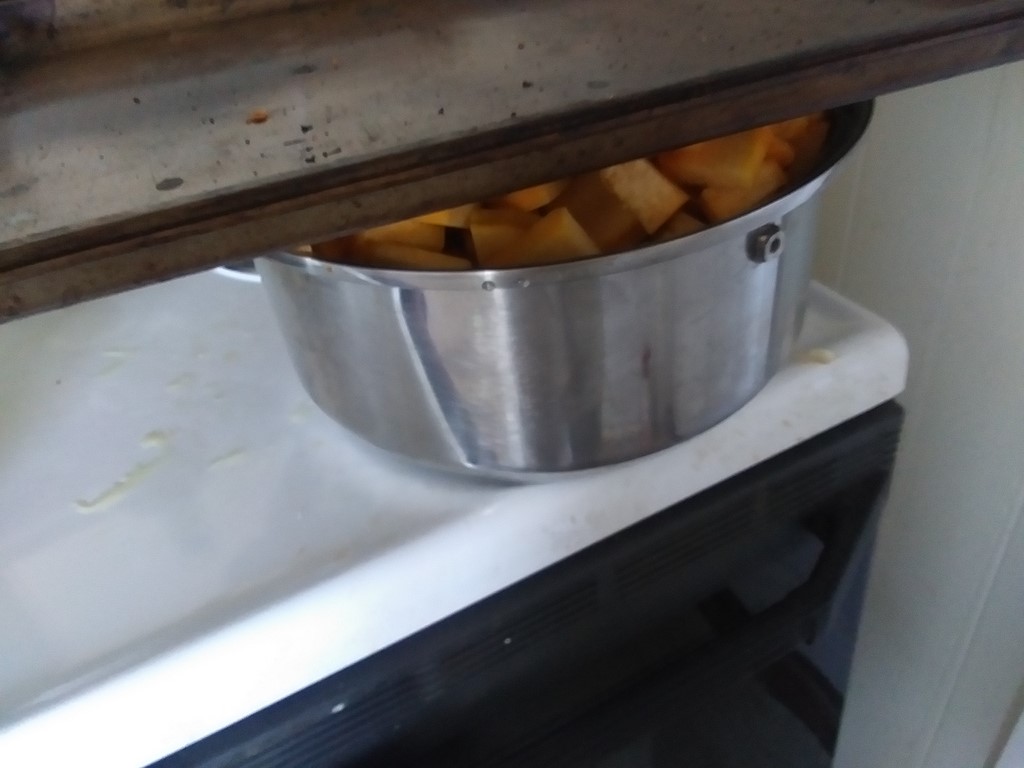
The baking tray is almost a good fit. Steam condenses on the underside and falls back into the pot to continue the simmering process.
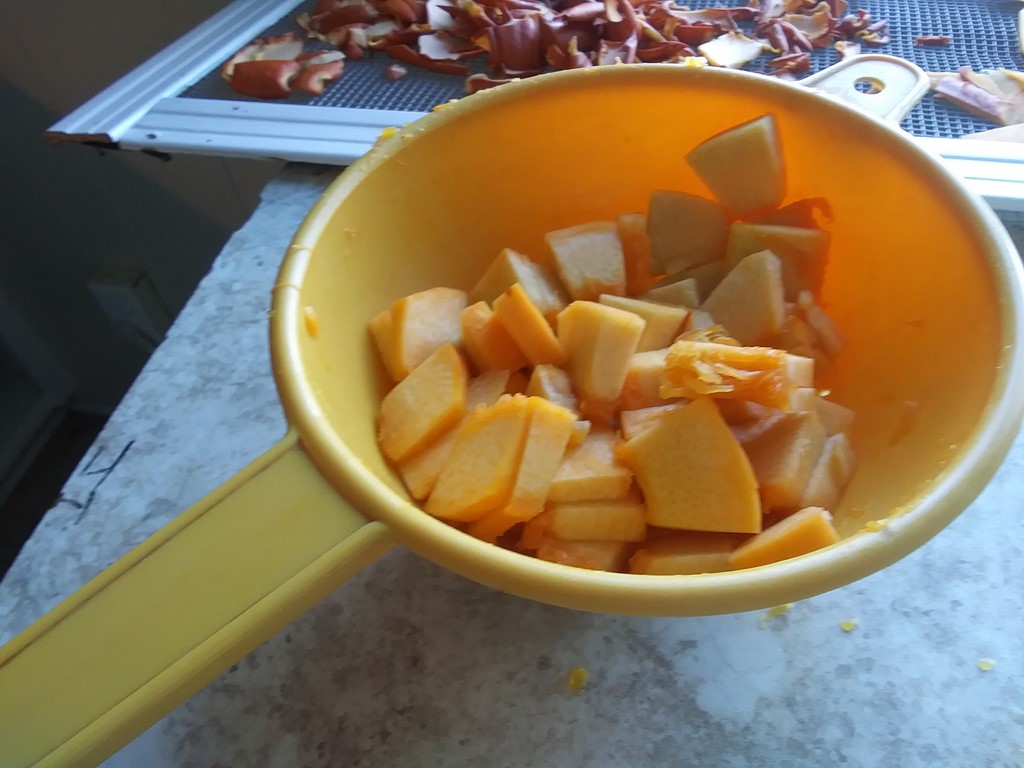
A colander that wouldn’t fit waits for an hour or two. When the simmering pot level drops, I shall stir these into the pulp and their temperature will be raised quickly by the surrounding hot pulp.
At the end of this process I have a growing collection of jars of liquor buffered in the refrigerator, and one and a half jars of pulp waiting to be sterilized. Later today I shall use my simmered pulp to complete three jars for sterilizing, and bottle what is left in jars waiting for a chance to be sterilized.
This means that I always seem to have material waiting in the pipeline, but I am not worried about spoilage as long as it is left in my cool (8c overnight) kitchen or in the refrigerator.
Wednesday, November 17, 2021
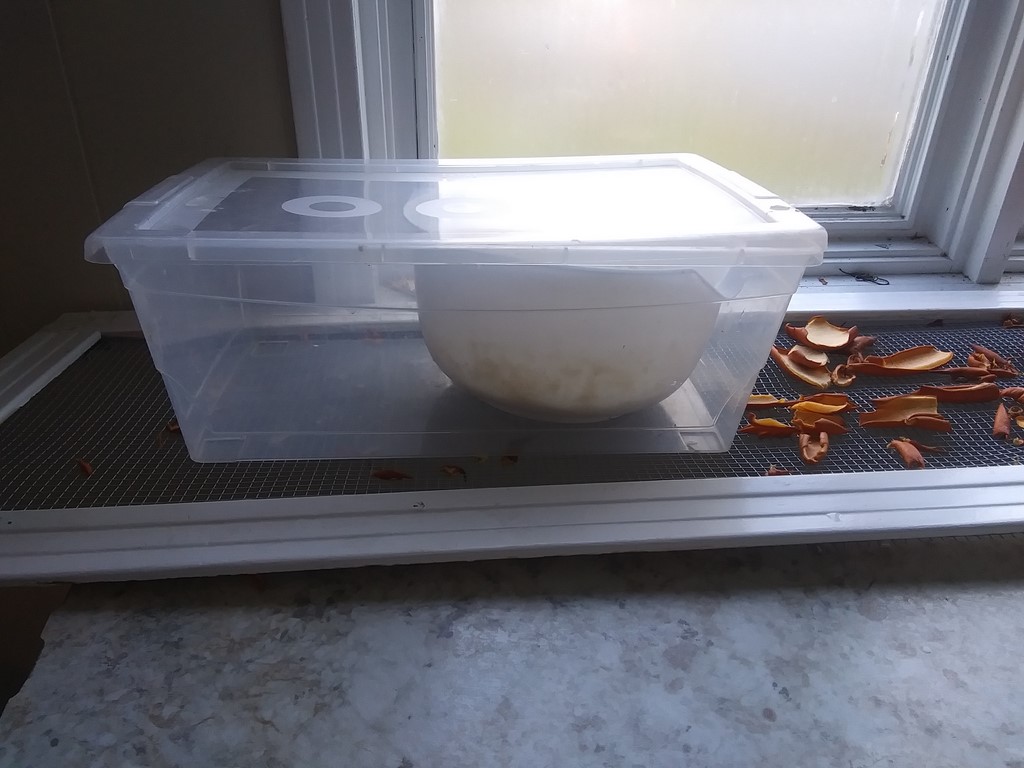
Now that the drying-rack is in place I can use it to help my bread- dough rise. Second Use For Everything!
Thursday, November 18, 2021
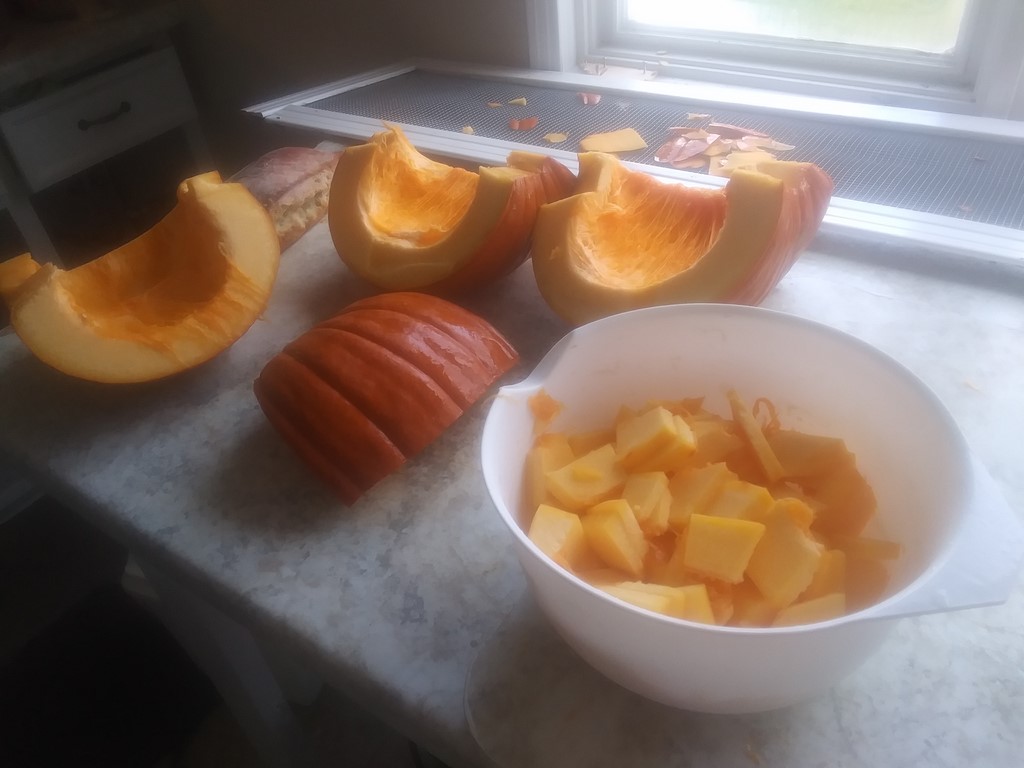
Another small change in the process: I dice into a plastic bowl, then microwave that bowl of chunks for three minutes. I spend just over three minutes dicing the following chunk, so when that is done, I tip the micro-waved bowl of chunks into the simmering urn, scrape the second batch of chunks into the bowl to microwave, and begin dicing the third chunk. This speeds up the process of bringing the chunks to the boil.
Sunday, November 21, 2021
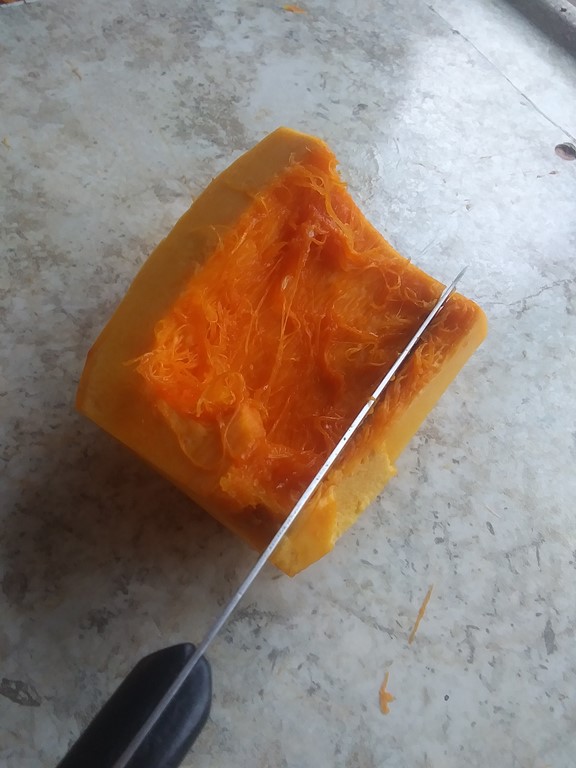
Excepting for Caitlin’s pumpkin, today is the last, one medium and two small pumpkins.
I have begin slicing the peeled quadrants from the inside. This method severs the fibres that held seeds and allows me to separate the slices better for dicing.

My current stock of pumpkin flesh, with jars of liquor (or “broth”, because it has boiled) at the front. The flat immediately below the circuit panel is fish stew, and the flat off to the left holds two or three more jars of fish stew.
Now if left here, these jars will come close to freezing, and if taken out to the shed for longer-term storage, they will freeze. But that does not worry me. My experience with the frozen jars of pears on my drive here 2½ years ago is that vegetable matter, if sterilized by boiling, thaws well and is edible.